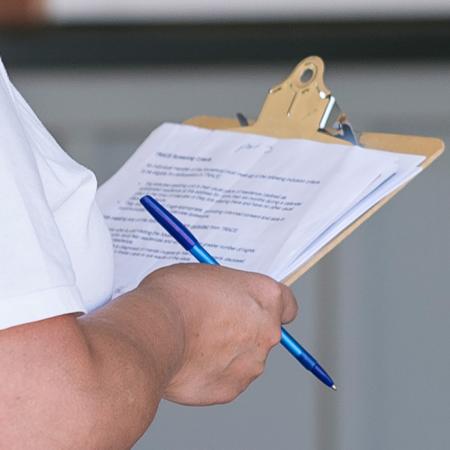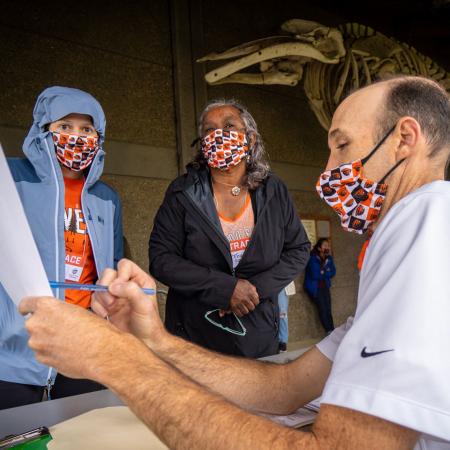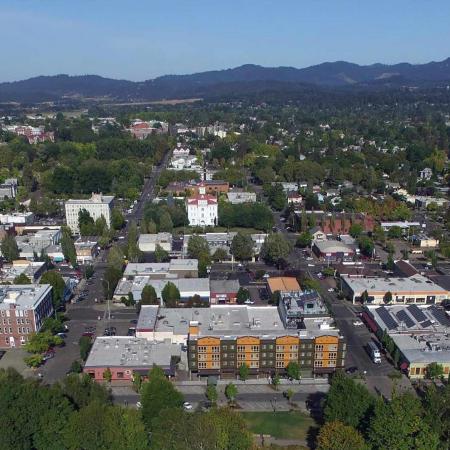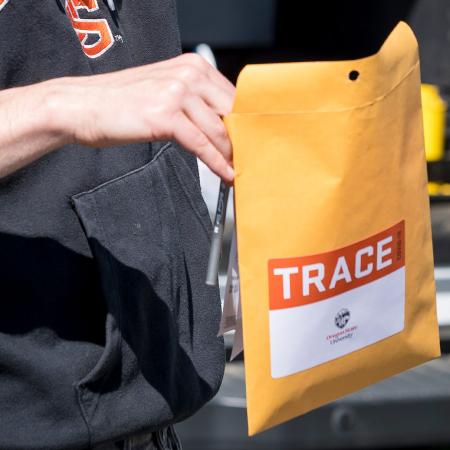NEWPORT, Ore. – TRACE-COVID-19, the groundbreaking Oregon State University project to determine community prevalence of the novel coronavirus, will return to Newport for two more days of sampling this weekend, July 11-12.
The second round of door-to-door sampling in Newport follows a community prevalence estimate of 3.4% on June 20-21 when the TRACE team first visited Newport. Oregon State brought TRACE, which began in Corvallis and first expanded to Bend, to Newport after the positive tests of more than 120 workers at Pacific Seafood, which operates five processing facilities in the city. In Newport, university researchers are collaborating with Lincoln County Health & Human Services.
TRACE-COVID-19 stands for Team-based Rapid Assessment of Community-Level Coronavirus Epidemics.
“We are very grateful that OSU is able to return to Newport,” said Kaety Jacobson, Lincoln County commissioner. “The prevalence data we received from the first weekend of TRACE sampling was extremely valuable in giving us a snapshot of what was going on in our community. The additional data we will get from this coming weekend will let us know if our efforts to curtail the spread of COVID-19 are working, or if additional actions need to be taken.”
Sewage samples from three Lincoln County wastewater treatment plants also were collected and then analyzed by Oregon State researchers for genetic evidence of SARS-CoV-2, the virus that causes COVID-19. Samples collected in Newport on June 10-12 and June 17-19 showed “a strong signal of SARS-CoV-2,” said Tyler Radniecki of the OSU College of Engineering, a principal investigator on the sewage surveillance team.
Sewage samples taken in Yachats and Depoe Bay on June 5-7 and June 10 showed no evidence of the novel coronavirus in those nearby communities.
“The results tell us only what was occurring at the time of sampling, not what is happening today,” Radniecki said. “They should not be interpreted as an indication that any of these communities can relax their vigilance. Everyone in each of these communities should be encouraged to wear face coverings, social distance, avoid groups of people and seek medical assistance if warranted.”
In Newport on June 20-21, TRACE field teams collected samples from 336 of the households they visited, or 71%, across 30 neighborhoods. In all, the workers received samples from 569 people, and 13 tested positive for SARS-CoV-2.
In Newport, TRACE leaders are partnering with OSU’s Hatfield Marine Science Center and the OSU Extension Service. Oregon State’s work in Newport complements other sampling, testing and contact tracing assistance being given by health officials from Tillamook and Clatsop counties.
“We are pleased to be able to return to Newport to further inform the Lincoln County response with a second round of up-to-date prevalence results as well as additional sewer testing,” said Jeff Bethel, associate professor in the OSU College of Public Health and Human Sciences and one of TRACE’s co-leaders
“The results from the a second round of TRACE sampling will provide a snap shot in time to see if the prevalence of the virus is changing and inform local residents and county and local health care providers with an immediate sense of the city’s COVID-19 wellness,” said Bob Cowen, director of the Hatfield Marine Science Center.
Newport’s population is 10,600, comprising roughly 20% of the nearly 50,000 people who live in Lincoln County.
At each home visited by TRACE field workers, members of the household are invited to participate in the study. Those who choose to take part are asked to provide information such as their name and date of birth; to fill out a simple consent form; and to answer a few confidential, health-related questions.
Participants are given a nasal-swab test kit that they administer to themselves inside their home and their minor children if they want them to take part. The field staff wait outside, and the participants leave the completed test kits outside their front door.
Field staff maintain a safe distance at all times and do not enter anyone’s home. The safety of participants and TRACE field staff is a key part of the study’s research design, Bethel said.
The tests used in TRACE-COVID-19 collect material from the entrance of the nose and are more comfortable and less invasive than the tests that collect secretions from the throat and the back of the nose.
The field workers leave participants with information about the project and how they will receive their results – available in seven to 10 days – as well as health guidance from Lincoln County and the Centers for Disease Control and Prevention. Participants in the study are sent their results and those of their minor children by secure e-mail with receipt by standard mail delivery as a backup. Everyone’s personal information is safeguarded.
The TRACE study is a collaboration of the OSU colleges of Science, Agricultural Sciences, Engineering, Public Health and Human Sciences, and the Carlson College of Veterinary Medicine and the OSU Center for Genome Research and Biocomputing – in partnership with county health officials.
The study was initially funded by OSU and a grant from the David and Lucile Packard Foundation, and has been aided by work from the OSU Foundation and the OSU Alumni Association. Funding from PacificSource Health plans has allowed for the expansion to Bend and Newport, and additional sampling in Corvallis.
The diagnostic testing component of TRACE operates through a partnership between the Oregon Veterinary Diagnostic Laboratory, which is located at OSU, and Willamette Valley Toxicology.
For more information about TRACE, visit the TRACE-COVID-19 website. The site includes a list of frequently asked questions.
COVID-19, first reported to the World Health Organization on Dec. 31, 2019, has been confirmed in more than 11.3 million people worldwide and has killed more than 532,000 people. In the United States, there have been more than 2.8 million reported cases – including more than 10,300 in Oregon – and more than 129,000 deaths nationwide. Lincoln County has had 346 confirmed cases and four deaths.
TRACE-COVID-19 began in Corvallis the weekend of April 25-26 and continued the subsequent two weekends. The fourth weekend of sampling had originally been scheduled for May 16-17 but was rescheduled by TRACE leaders to June 13-14 to help determine if relaxing stay-at-home orders led to a jump in the prevalence of the virus in the Corvallis community.
Results from the fourth week of sampling in Corvallis are pending.
This story was originally posted by the Oregon State University newsroom.




